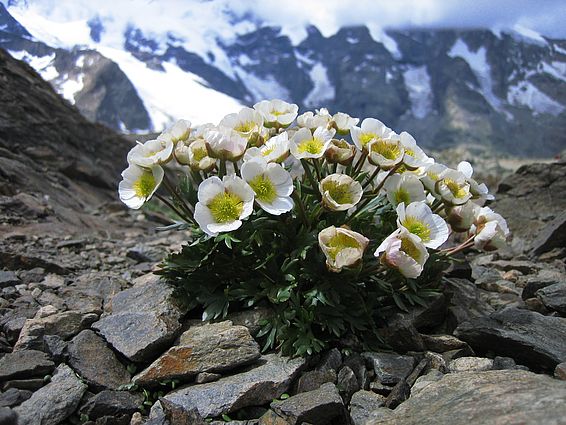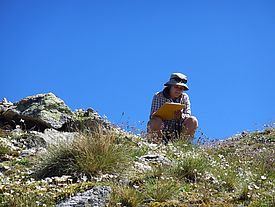The stronger global warming is, the greater the increase in the number of plant species on mountain tops. This was the main finding of a study published in the journal Nature.
Significantly more plant species are growing on mountain tops today than 100 years ago. Many studies have already suggested that this trend is linked to global warming. However, no direct correlation between rising temperatures and an increase in the number of species had been extensively demonstrated before.
Such a correlation has now been established by researchers led by Manuel Steinbauer from the University of Erlangen and Sonja Wipf from the WSL Institute for Snow and Avalanche Research (SLF), working together with scientists from 11 countries. To this end, they scrutinised summit vegetation on mountain tops across Europe. In all, they surveyed populations of plant species on 302 peaks in the Alps, the Pyrenees, the Carpathian mountains and on mountain tops in Scotland and Scandinavia. The researchers compared their findings with older – in some cases historical – lists of species on the same peaks. This approach provided a unique data set spanning 145 years.

Responding ever faster to climate change
The results show that, in general, the number of species on Europe's summits has gone up. Moreover, the rate of this increase has grown ever faster in recent decades due to global warming, which has also steadily speeded up. The higher temperatures had risen during the timespan between two vegetation surveys on the same summit, the greater the increase in the number of plant species found there. "This is the first time that such an accelerated response to climate warming has been demonstrated in alpine habitats", says SLF researcher Sonja Wipf. So far, such accelerated processes – caused by ever faster global warming – had been demonstrated primarily for inanimate systems, such as glaciers. The researchers have now published the results of their study in the renowned journal Nature.
What are the consequences?
Higher temperatures are enabling more and more thermophilic species from lower elevations to push up into regions at higher altitudes, where they were unable to survive in the past. On average, these plants are larger and thus more competitive than traditional summit species, which are therefore in danger of being forced out in the longer term. However, it will be decades before we know how climate change has altered the composition of summit species in the long run.
Copyright ¶
Copyright ¶
WSL and SLF provide the artwork for imaging of press articles relating to this media release for free. Transferring and saving the images in image databases and saving of images by third parties is not allowed.
Contact ¶
Links and documents ¶
Scientific publication:
Accelerated increase in plant species richness on mountain summits is linked to warming
Project page:Summit flora and climate change

